20.2 Ways of Seeing

Ways of Seeing
1
Seeing comes before words. The child looks and recognizes before it can speak.
2
But there is also another sense in which seeing comes before words. It is seeing which establishes our place in the surrounding world; we explain that world with words, but words can never undo the fact that we are surrounded by it. The relation between what we see and what we know is never settled. Each evening we see the sun set. We know that the earth is turning away from it. Yet the knowledge, the explanation, never quite fits the sight. The Surrealist painter Magritte commented on this always-present gap between words and seeing in a painting called The Key of Dreams.
3
The way we see things is affected by what we know or what we believe. In the Middle Ages when men believed in the physical existence of Hell the sight of fire must have meant something different from what it means today. Nevertheless their idea of Hell owed a lot to the sight of fire consuming and the ashes remaining — as well as to their experience of the pain of burns.
4
When in love, the sight of the beloved has a completeness which no words and no embrace can match: a completeness which only the act of making love can temporarily accommodate.
5
Yet this seeing which comes before words, and can never be quite covered by them, is not a question of mechanically reacting to stimuli. (It can only be thought of in this way if one isolates the small part of the process which concerns the eye’s retina.) We only see what we look at. To look is an act of choice. As a result of this act, what we see is brought within our reach — though not necessarily within arm’s reach. To touch something is to situate oneself in relation to it. (Close your eyes, move round the room and notice how the faculty of touch is like a static, limited form of sight.) We never look at just one thing; we are always looking at the relation between things and ourselves. Our vision is continually active, continually moving, continually holding things in a circle around itself, constituting what is present to us as we are.
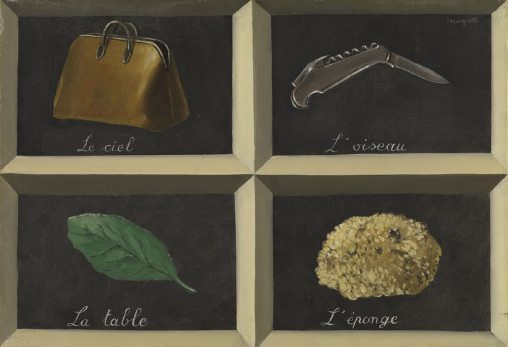
6
Soon after we can see, we are aware that we can also be seen. The eye of the other combines with our own eye to make it fully credible that we are part of the visible world.
7
If we accept that we can see that hill over there, we propose that from that hill we can be seen. The reciprocal nature of vision is more fundamental than that of spoken dialogue. And often dialogue is an attempt to verbalize this — an attempt to explain how, either metaphorically or literally, “you see things,” and an attempt to discover how “he sees things.”
8
In the sense in which we use the word in this book, all images are man-made [see below]. An image is a sight which has been recreated or reproduced. It is an appearance, or a set of appearances, which has been detached from the place and time in which it first made its appearance and preserved — for a few moments or a few centuries. Every image embodies a way of seeing. Even a photograph. For photographs are not, as is often assumed, a mechanical record. Every time we look at a photograph, we are aware, however slightly, of the photographer selecting that sight from an infinity of other possible sights. This is true even in the most casual family snapshot. The photographer’s way of seeing is reflected in his choice of subject. The painter’s way of seeing is reconstituted by the marks he makes on the canvas or paper. Yet, although every image embodies a way of seeing, our perception or appreciation of an image depends also upon our own way of seeing. (It may be, for example, that Sheila is one figure among twenty; but for our own reasons she is the one we have eyes for.)

9
Images were first made to conjure up the appearance of something that was absent. Gradually it became evident that an image could outlast what it represented; it then showed how something or somebody had once looked — and thus by implication how the subject had once been seen by other people. Later still the specific vision of the image-maker was also recognized as part of the record. An image became a record of how X had seen Y. This was the result of an increasing consciousness of individuality, accompanying an increasing awareness of history. It would be rash to try to date this last development precisely. But certainly in Europe such consciousness has existed since the beginning of the Renaissance.
10
No other kind of relic or text from the past can offer such a direct testimony about the world which surrounded other people at other times. In this respect images are more precise and richer than literature. To say this is not to deny the expressive or imaginative quality of art, treating it as mere documentary evidence; the more imaginative the work, the more profoundly it allows us to share the artist’s experience of the visible.
11
Yet when an image is presented as a work of art, the way people look at it is affected by a whole series of learned assumptions about art. Assumptions concerning:
Beauty
Truth
Genius
Civilization
Form
Status
Taste, etc.
Many of these assumptions no longer accord with the world as it is. (The world-as-it-is is more than pure objective fact, it includes consciousness.) Out of true with the present, these assumptions obscure the past. They mystify rather than clarify. The past is never there waiting to be discovered, to be recognized for exactly what it is. History always constitutes the relation between a present and its past. Consequently fear of the present leads to mystification of the past. The past is not for living in; it is a well of conclusions from which we draw in order to act. Cultural mystification of the past entails a double loss. Works of art are made unnecessarily remote. And the past offers us fewer conclusions to complete in action.
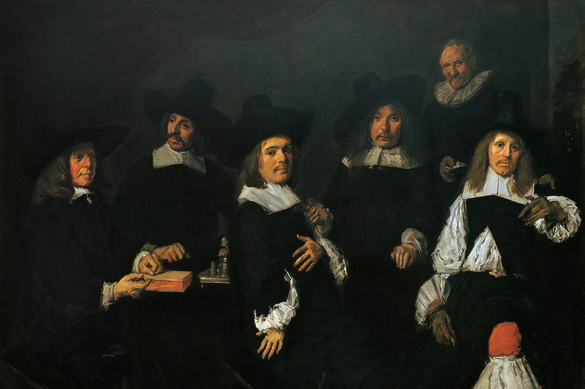
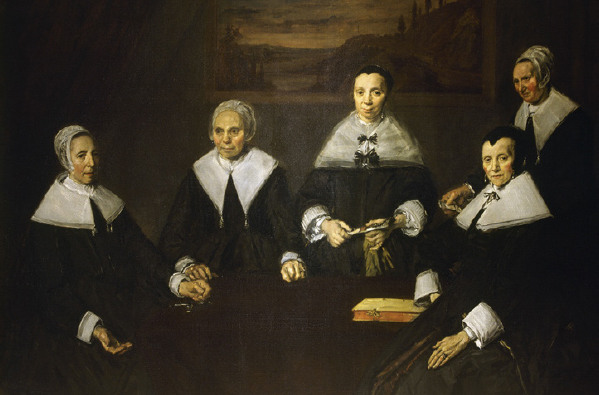
12
When we “see” a landscape, we situate ourselves in it. If we “saw” the art of the past, we would situate ourselves in history. When we are prevented from seeing it, we are being deprived of the history which belongs to us. Who benefits from this deprivation? In the end, the art of the past is being mystified because a privileged minority is striving to invent a history which can retrospectively justify the role of the ruling classes, and such a justification can no longer make sense in modern terms. And so, inevitably, it mystifies.
13
Let us consider a typical example of such mystification. A two-volume study was recently published on Frans Hals.1 It is the authoritative work to date on this painter. As a book of specialized art history it is no better and no worse than the average.
14
The last two great paintings by Frans Hals portray the Governors and the Governesses of an Alms House for old paupers in the Dutch seventeenth-century city of Haarlem. They were officially commissioned portraits. Hals, an old man of over eighty, was destitute. Most of his life he had been in debt. During the winter of 1664, the year he began painting these pictures, he obtained three loads of peat on public charity, otherwise he would have frozen to death. Those who now sat for him were administrators of such public charity.
15
The author records these facts and then explicitly says that it would be incorrect to read into the paintings any criticism of the sitters. There is no evidence, he says, that Hals painted them in a spirit of bitterness. The author considers them, however, remarkable works of art and explains why. Here he writes of the Regentesses:
Each woman speaks to us of the human condition with equal importance. Each woman stands out with equal clarity against the enormous dark surface, yet they are linked by a firm rhythmical arrangement and the subdued diagonal pattern formed by their heads and hands. Subtle modulations of the deep, glowing blacks contribute to the harmonious fusion of the whole and form an unforgettable contrast with the powerful whites and vivid flesh tones where the detached strokes reach a peak of breadth and strength. [Berger’s italics]
16
The compositional unity of a painting contributes fundamentally to the power of its image. It is reasonable to consider a painting’s composition. But here the composition is written about as though it were in itself the emotional charge of the painting. Terms like harmonious fusion, unforgettable contrast, reaching a peak of breadth and strength transfer the emotion provoked by the image from the plane of lived experience, to that of disinterested “art appreciation.” All conflict disappears. One is left with the unchanging “human condition,” and the painting considered as a marvellously made object.
17
Very little is known about Hals or the Regents who commissioned him. It is not possible to produce circumstantial evidence to establish what their relations were. But there is the evidence of the paintings themselves: the evidence of a group of men and a group of women as seen by another man, the painter. Study this evidence and judge for yourself.
18
The art historian fears such direct judgment:
As in so many other pictures by Hals, the penetrating characterizations almost seduce us into believing that we know the personality traits and even the habits of the men and women portrayed.
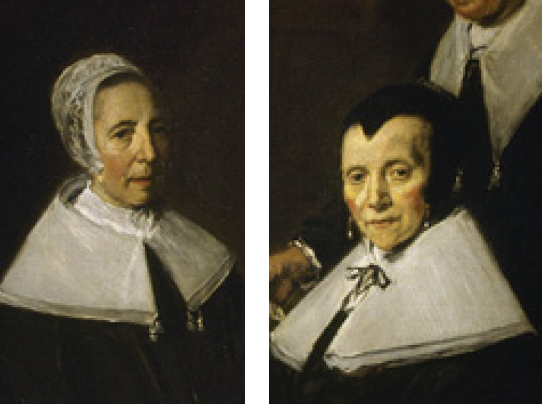
19
What is this “seduction” he writes of? It is nothing less than the paintings working upon us. They work upon us because we accept the way Hals saw his sitters. We do not accept this innocently. We accept it in so far as it corresponds to our own observation of people, gestures, faces, institutions. This is possible because we still live in a society of comparable social relations and moral values. And it is precisely this which gives the paintings their psychological and social urgency. It is this — not the painter’s skill as a “seducer” — which convinces us that we can know the people portrayed.
20
The author continues:
In the case of some critics the seduction has been a total success. It has, for example, been asserted that the Regent in the tipped slouch hat, which hardly covers any of his long, lank hair, and whose curiously set eyes do not focus, was shown in a drunken state. [below]
21
This, he suggests, is a libel. He argues that it was a fashion at that time to wear hats on the side of the head. He cites medical opinion to prove that the Regent’s expression could well be the result of a facial paralysis. He insists that the painting would have been unacceptable to the Regents if one of them had been portrayed drunk. One might go on discussing each of these points for pages. (Men in seventeenth-century Holland wore their hats on the side of their heads in order to be thought of as adventurous and pleasure-loving. Heavy drinking was an approved practice. Etcetera.) But such a discussion would take us even farther away from the only confrontation which matters and which the author is determined to evade.
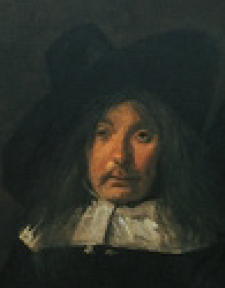
22
In this confrontation the Regents and Regentesses stare at Hals, a destitute old painter who has lost his reputation and lives off public charity; he examines them through the eyes of a pauper who must nevertheless try to be objective; i.e., must try to surmount the way he sees as a pauper. This is the drama of these paintings. A drama of an “unforgettable contrast.”
23
Mystification has little to do with the vocabulary used. Mystification is the process of explaining away what might otherwise be evident. Hals was the first portraitist to paint the new characters and expressions created by capitalism. He did in pictorial terms what Balzac did two centuries later in literature. Yet the author of the authoritative work on these paintings sums up the artist’s achievement by referring to
Hals’s unwavering commitment to his personal vision, which enriches our consciousness of our fellow men and heightens our awe for the ever-increasing power of the mighty impulses that enabled him to give us a close view of life’s vital forces.
24
That is mystification.
25
In order to avoid mystifying the past (which can equally well suffer pseudo-Marxist mystification) let us now examine the particular relation which now exists, so far as pictorial images are concerned, between the present and the past. If we can see the present clearly enough, we shall ask the right questions of the past.
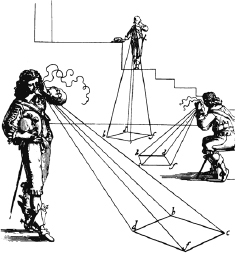
26
Today we see the art of the past as nobody saw it before. We actually perceive it in a different way.
27
This difference can be illustrated in terms of what was thought of as perspective. The convention of perspective, which is unique to European art and which was first established in the early Renaissance, centers everything on the eye of the beholder. It is like a beam from a lighthouse — only instead of light traveling outwards, appearances travel in. The conventions called those appearances reality. Perspective makes the single eye the center of the visible world. Everything converges on to the eye as to the vanishing point of infinity. The visible world is arranged for the spectator as the universe was once thought to be arranged for God.
28
According to the convention of perspective there is no visual reciprocity. There is no need for God to situate himself in relation to others: he is himself the situation. The inherent contradiction in perspective was that it structured all images of reality to address a single spectator who, unlike God, could only be in one place at a time.
29
After the invention of the camera this contradiction gradually became apparent.
I’m an eye. A mechanical eye. I, the machine, show you a world the way only I can see it. I free myself for today and forever from human immobility. I’m in constant movement. I approach and pull away from objects. I creep under them. I move alongside a running horse’s mouth. I fall and rise with the falling and rising bodies. This is I, the machine, maneuvring in the chaotic movements, recording one movement after another in the most complex combinations.
Freed from the boundaries of time and space, I coordinate any and all points of the universe, wherever I want them to be. My way leads towards the creation of a fresh perception of the world. Thus I explain in a new way the world unknown to you.2
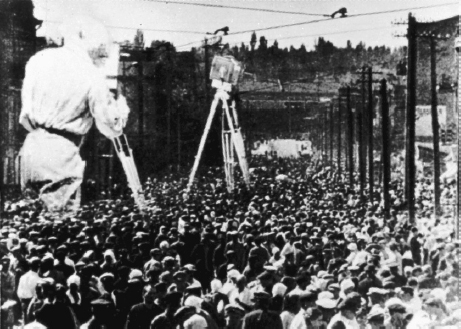
The camera isolated momentary appearances and in so doing destroyed the idea that images were timeless. Or, to put it another way, the camera showed that the notion of time passing was inseparable from the experience of the visual (except in paintings). What you saw depended upon where you were when. What you saw was relative to your position in time and space. It was no longer possible to imagine everything converging on the human eye as on the vanishing point of infinity.
30
This is not to say that before the invention of the camera men believed that everyone could see everything. But perspective organized the visual field as though that were indeed the ideal. Every drawing or painting that used perspective proposed to the spectator that he was the unique center of the world. The camera — and more particularly the movie camera — demonstrated that there was no center.
31
The invention of the camera changed the way men saw. The visible came to mean something different to them. This was immediately reflected in painting.
32
For the Impressionists the visible no longer presented itself to man in order to be seen. On the contrary, the visible, in continual flux, became fugitive. For the Cubists the visible was no longer what confronted the single eye, but the totality of possible views taken from points all round the object (or person) being depicted [below].
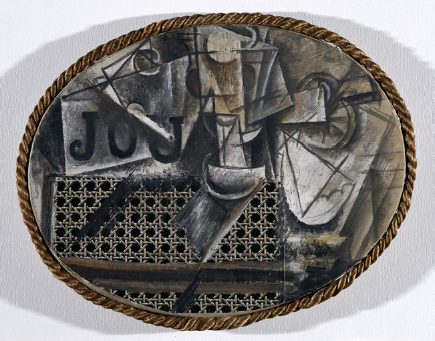
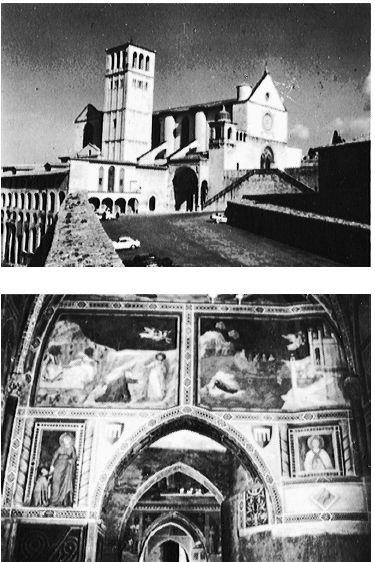
33
The invention of the camera also changed the way in which men saw paintings painted long before the camera was invented. Originally paintings were an integral part of the building for which they were designed. Sometimes in an early Renaissance church or chapel one has the feeling that the images on the wall are records of the building’s interior life, that together they make up the building’s memory — so much are they part of the particularity of the building [at right].
34
The uniqueness of every painting was once part of the uniqueness of the place where it resided. Sometimes the painting was transportable. But it could never be seen in two places at the same time. When the camera reproduces a painting, it destroys the uniqueness of its image. As a result its meaning changes. Or, more exactly, its meaning multiplies and fragments into many meanings.
35
This is vividly illustrated by what happens when a painting is shown on a television screen. The painting enters each viewer’s house. There it is surrounded by his wallpaper, his furniture, his mementos. It enters the atmosphere of his family. It becomes their talking point. It lends its meaning to their meaning. At the same time it enters a million other houses and, in each of them, is seen in a different context. Because of the camera, the painting now travels to the spectator rather than the spectator to the painting. In its travels, its meaning is diversified.
36
One might argue that all reproductions more or less distort, and that therefore the original painting is still in a sense unique. Below is a reproduction of the Virgin of the Rocks by Leonardo da Vinci.
37
Having seen this reproduction, one can go to the National Gallery to look at the original and there discover what the reproduction lacks. Alternatively one can forget about the quality of the reproduction and simply be reminded, when one sees the original, that it is a famous painting of which somewhere one has already seen a reproduction. But in either case the uniqueness of the original now lies in it being the original of a reproduction. It is no longer what its image shows that strikes one as unique; its first meaning is no longer to be found in what it says, but in what it is.
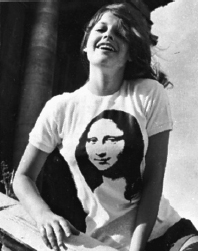
38
This new status of the original work is the perfectly rational consequence of the new means of reproduction. But it is at this point that a process of mystification again enters. The meaning of the original work no longer lies in what it uniquely says but in what it uniquely is. How is its unique existence evaluated and defined in our present culture? It is defined as an object whose value depends upon its rarity. This market is affirmed and gauged by the price it fetches on the market. But because it is nevertheless “a work of art” — and art is thought to be greater than commerce — its market price is said to be a reflection of its spiritual value. Yet the spiritual value of an object, as distinct from a message or an example, can only be explained in terms of magic or religion. And since in modern society neither of these is a living force, the art object, the “work of art,” is enveloped in an atmosphere of entirely bogus religiosity. Works of art are discussed and presented as though they were holy relics: relics which are first and foremost evidence of their own survival. The past in which they originated is studied in order to prove their survival genuine. They are declared art when their line of descent can be certified.
39
Before the Virgin of the Rocks the visitor to the National Gallery would be encouraged by nearly everything he might have heard and read about the painting to feel something like this: “I am in front of it. I can see it. This painting by Leonardo is unlike any other in the world. The National Gallery has the real one. If I look at this painting hard enough, I should somehow be able to feel its authenticity. The Virgin of the Rocks by Leonardo da Vinci: it is authentic and therefore it is beautiful.”
40
To dismiss such feelings as naive would be quite wrong. They accord perfectly with the sophisticated culture of art experts for whom the National Gallery catalogue is written. The entry on the Virgin of the Rocks is one of the longest entries. It consists of fourteen closely printed pages. They do not deal with the meaning of the image. They deal with who commissioned the painting, legal squabbles, who owned it, its likely date, the families of its owners. Behind this information lie years of research. The aim of the research is to prove beyond any shadow of doubt that the painting is a genuine Leonardo. The secondary aim is to prove that an almost identical painting in the Louvre is a replica of the National Gallery version.
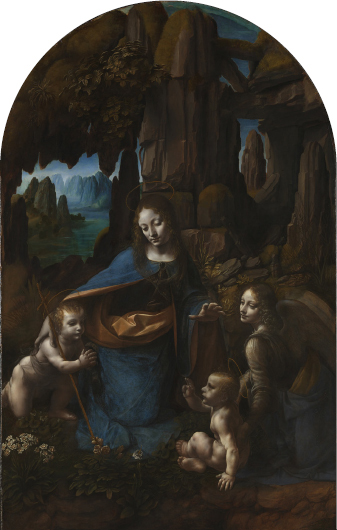
41
French art historians try to prove the opposite.
42
The National Gallery sells more reproductions of Leonardo’s cartoon of The Virgin and Child with St. Anne and St. John the Baptist than any other picture in their collection. A few years ago it was known only to scholars. It became famous because an American wanted to buy it for two and a half million pounds.
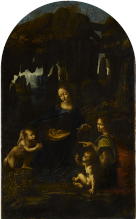
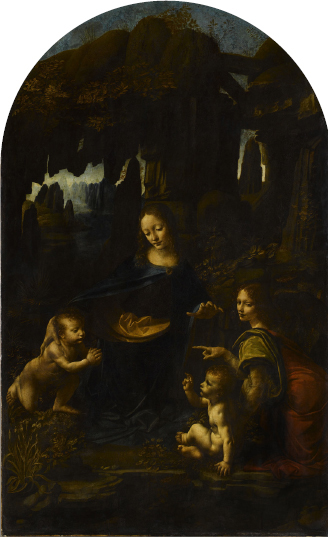
43
Now it hangs in a room by itself. The room is like a chapel. The drawing is behind bullet-proof perspex. It has acquired a new kind of impressiveness. Not because of what it shows — not because of the meaning of its image. It has become impressive, mysterious, because of its market value.
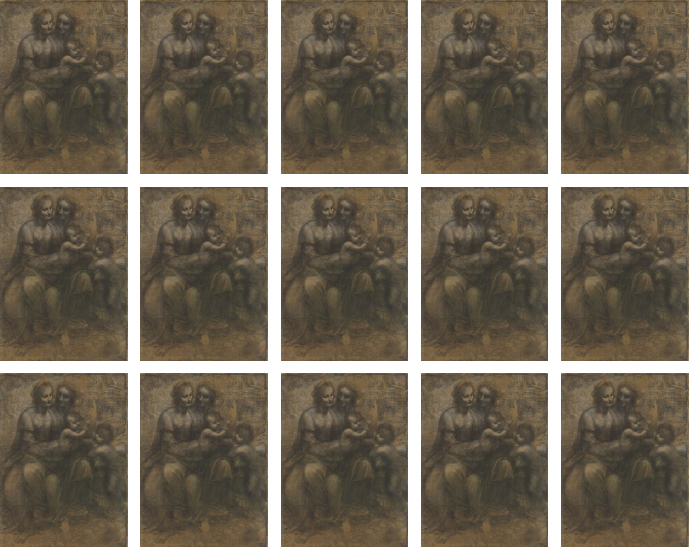
44
The bogus religiosity which now surrounds original works of art, and which is ultimately dependent upon their market value, has become the substitute for what paintings lost when the camera made them reproducible. Its function is nostalgic. It is the final empty claim for the continuing values of an oligarchic, undemocratic culture. If the image is no longer unique and exclusive, the art object, the thing, must be made mysteriously so.
The majority of the population do not visit art museums. The following table shows how closely an interest in art is related to privileged education.
National proportion of art museum visitors according to level of education: Percentage of each educational category who visit art museums
| Greece Poland France Holland | Greece Poland France Holland | ||||||||
| With no educational qualification | 0.02 | 0.12 | 0.15 | – | Only secondary education | 10.5 | 10.4 | 10 | 20 |
| Only primary education | 0.30 | 1.50 | 0.45 | 0.50 | Further and higher education | 11.5 | 11.7 | 12.5 | 17.3 |
Source: Pierre Bourdieu and Alain Darbel, L’Amour de l’art, Editions de Minuit, Paris 1969, Appendix 5, table 4
46
The majority take it as axiomatic that the museums are full of holy relics which refer to a mystery which excludes them: the mystery of unaccountable wealth. Or, to put this another way, they believe that original masterpieces belong to the preserve (both materially and spiritually) of the rich. Another table indicates what the idea of an art gallery suggests to each social class.
Of the places listed below which does a museum remind you of most?
| Manual workers | Skilled and white collar workers | Professional and upper managerial | |
| % | % | % | |
| Church | 66 | 45 | 30.5 |
| Library | 9 | 34 | 28 |
| Lecture hall | — | 4 | 4.5 |
| Department store or | |||
| entrance hall in public building | — | 7 | 2 |
| Church and library | 9 | 2 | 4.5 |
| Church and lecture hall | 4 | 2 | — |
| Library and lecture hall | — | — | 2 |
| None of these | 4 | 2 | 19.5 |
| No reply | 8 | 4 | 9 |
| 100 (n = 53) | 100 (n = 98) | 100 (n = 99) | |
Source: as above, Appendix 4, table 8
47
In the age of pictorial reproduction the meaning of paintings is no longer attached to them; their meaning becomes transmittable: that is to say it becomes information of a sort, and, like all information, it is either put to use or ignored; information carries no special authority within itself. When a painting is put to use, its meaning is either modified or totally changed. One should be quite clear about what this involves. It is not a question of reproduction failing to reproduce certain aspects of an image faithfully; it is a question of reproduction making it possible, even inevitable, that an image will be used for many different purposes and that the reproduced image, unlike an original work, can lend itself to them all. Let us examine some of the ways in which the reproduced image lends itself to such usage.

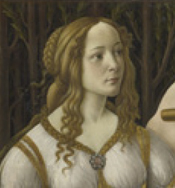
48
Reproduction isolates a detail of a painting from the whole. The detail is transformed. An allegorical figure becomes a portrait of a girl.
49
When a painting is reproduced by a film camera it inevitably becomes material for the film-maker’s argument.
50
A film which reproduces images of a painting leads the spectator, through the painting, to the film-maker’s own conclusions. The painting lends authority to the film-maker. This is because a film unfolds in time and a painting does not. In a film the way one image follows another, their succession, constructs an argument which becomes irreversible. In a painting all its elements are there to be seen simultaneously. The spectator may need time to examine each element of the painting but whenever he reaches a conclusion, the simultaneity of the whole painting is there to reverse or qualify his conclusion. The painting maintains its own authority. Paintings are often reproduced with words around them.
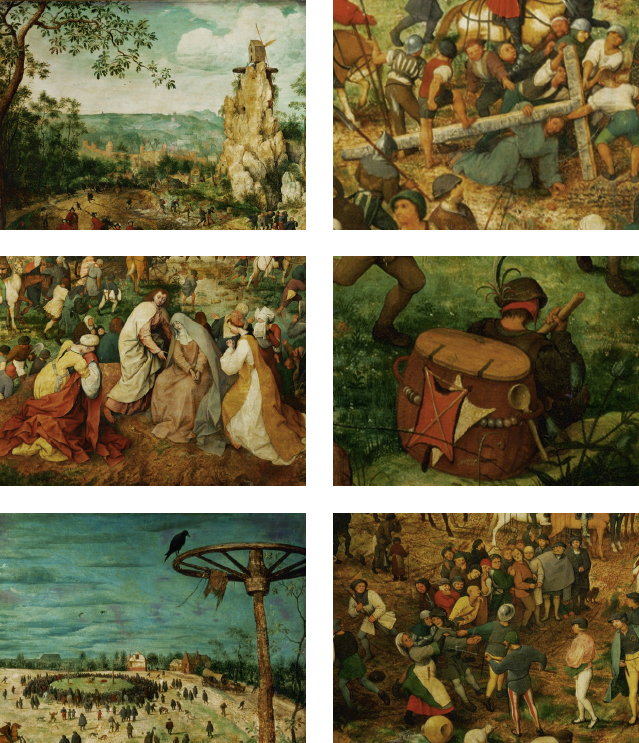
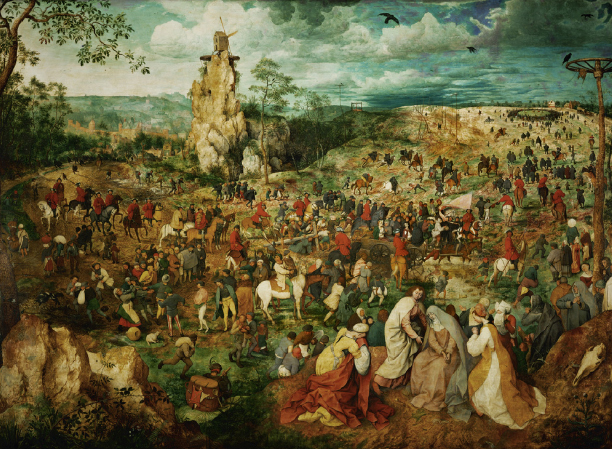
51
This is a landscape of a cornfield with birds flying out of it. Look at it for a moment. Then scroll down.

52
It is hard to define exactly how the words have changed the image but undoubtedly they have. The image now illustrates the sentence.
53
In this essay each image reproduced has become part of an argument which has little or nothing to do with the painting’s original independent meaning. The words have quoted the paintings to confirm their own verbal authority. . . .
54
Reproduced paintings, like all information, have to hold their own against all the other information being continually transmitted.
55
Consequently a reproduction, as well as making its own references to the image of its original, becomes itself the reference point for other images. The meaning of an image is changed according to what one sees immediately beside it or what comes immediately after it. Such authority as it retains, is distributed over the whole context in which it appears.
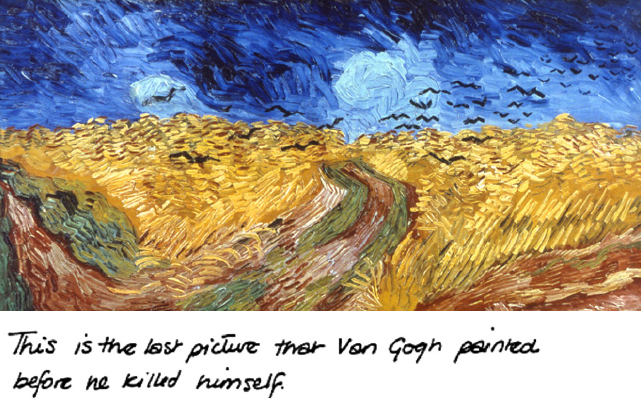
56
Because works of art are reproducible, they can, theoretically, be used by anybody. Yet mostly — in art books, magazines, films, or within gilt frames in living-rooms — reproductions are still used to bolster the illusion that nothing has changed, that art, with its unique undiminished authority, justifies most other forms of authority, that art makes inequality seem noble and hierarchies seem thrilling. For example, the whole concept of the National Cultural Heritage exploits the authority of art to glorify the present social system and its priorities.
57
The means of reproduction are used politically and commercially to disguise or deny what their existence makes possible. But sometimes individuals use them differently.
58
Adults and children sometimes have boards in their bedrooms or living-rooms on which they pin pieces of paper: letters, snapshots, reproductions of paintings, newspaper cuttings, original drawings, postcards. On each board all the images belong to the same language and all are more or less equal within it, because they have been chosen in a highly personal way to match and express the experience of the room’s inhabitant. Logically, these boards should replace museums.
59
What are we saying by that? Let us first be sure about what we are not saying.
60
We are not saying that there is nothing left to experience before original works of art except a sense of awe because they have survived. The way original works of art are usually approached — through museum catalogues, guides, hired cassettes, etc. — is not the only way they might be approached. When the art of the past ceases to be viewed nostalgically, the works will cease to be holy relics — although they will never re-become what they were before the age of reproduction. We are not saying original works of art are now useless.
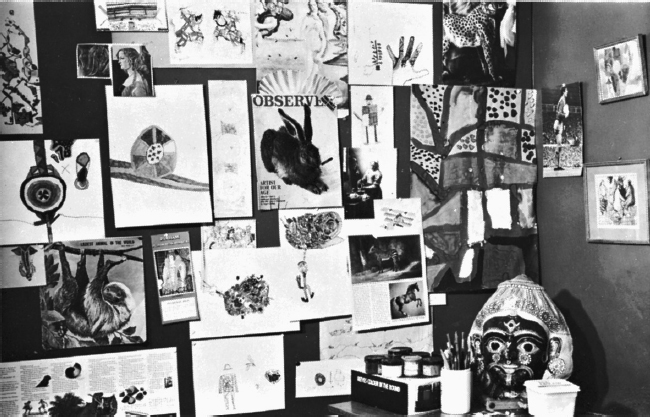
61
Original paintings are silent and still in a sense that information never is. Even a reproduction hung on a wall is not comparable in this respect for in the original the silence and stillness permeate the actual material, the paint, in which one follows the traces of the painter’s immediate gestures. This has the effect of closing the distance in time between the painting of the picture and one’s own act of looking at it. In this special sense all paintings are contemporary. Hence the immediacy of their testimony. Their historical moment is literally there before our eyes. Cézanne made a similar observation from the painter’s point of view. “A minute in the world’s life passes!
62
To paint it in its reality, and forget everything for that! To become that minute, to be the sensitive plate . . . give the image of what we see, forgetting everything that has appeared before our time. . . .” What we make of that painted moment when it is before our eyes depends upon what we expect of art, and that in turn depends today upon how we have already experienced the meaning of paintings through reproductions.
63
Nor are we saying that all art can be understood spontaneously. We are not claiming that to cut out a magazine reproduction of an archaic Greek head, because it is reminiscent of some personal experience, and to pin it to a board beside other disparate images, is to come to terms with the full meaning of that head.
64
The idea of innocence faces two ways. By refusing to enter a conspiracy, one remains innocent of that conspiracy. But to remain innocent may also be to remain ignorant. The issue is not between innocence and knowledge (or between the natural and the cultural) but between a total approach to art which attempts to relate it to every aspect of experience and the esoteric approach of a few specialized experts who are the clerks of the nostalgia of a ruling class in decline. (In decline, not before the proletariat, but before the new power of the corporation and the state.) The real question is: to whom does the meaning of the art of the past properly belong? to those who can apply it to their own lives, or to a cultural hierarchy of relic specialists?
65
The visual arts have always existed within a certain preserve; originally this preserve was magical or sacred. But it was also physical: it was the place, the cave, the building, in which, or for which, the work was made. The experience of art, which at first was the experience of ritual, was set apart from the rest of life — precisely in order to be able to exercise power over it. Later the preserve of art became a social one. It entered the culture of the ruling class, while physically it was set apart and isolated in their palaces and houses. During all this history the authority of art was inseparable from the particular authority of the preserve.
66
What the modern means of reproduction have done is to destroy the authority of art and to remove it — or, rather, to remove its images which they reproduce — from any preserve. For the first time ever, images of art have become ephemeral, ubiquitous, insubstantial, available, valueless, free. They surround us in the same way as a language surrounds us. They have entered the mainstream of life over which they no longer, in themselves, have power.
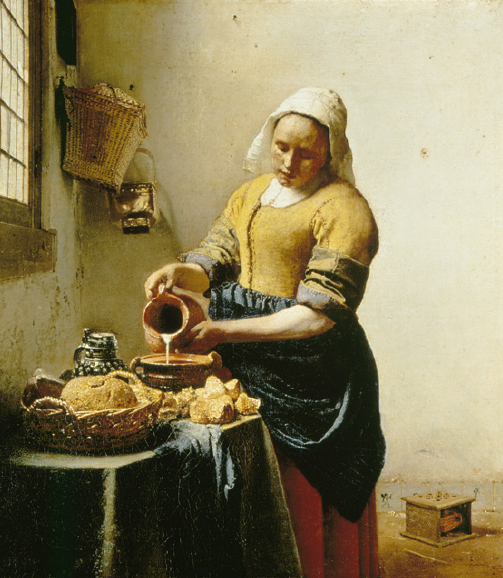
67
Yet very few people are aware of what has happened because the means of reproduction are used nearly all the time to promote the illusion that nothing has changed except that the masses, thanks to reproductions, can now begin to appreciate art as the cultured minority once did. Understandably, the masses remain uninterested and skeptical.
68
If the new language of images were used differently, it would, through its use, confer a new kind of power. Within it we could begin to define our experiences more precisely in areas where words are inadequate. (Seeing comes before words.) Not only personal experience, but also the essential historical experience of our relation to the past: that is to say the experience of seeking to give meaning to our lives, of trying to understand the history of which we can become the active agents.
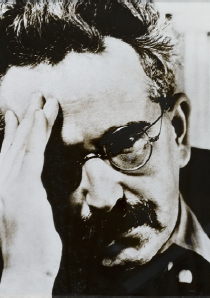
69
The art of the past no longer exists as it once did. Its authority is lost. In its place there is a language of images. What matters now is who uses that language for what purpose. This touches upon questions of copyright for reproduction, the ownership of art presses and publishers, the total policy of public art galleries and museums. As usually presented, these are narrow professional matters. One of the aims of this essay has been to show that what is really at stake is much larger. A people or a class which is cut off from its own past is far less free to choose and to act as a people or class than one that has been able to situate itself in history. This is why — and this is the only reason why — the entire art of the past has now become a political issue.
70
Many of the ideas in the preceding essay have been taken from another, written over forty years ago by the German critic and philosopher Walter Benjamin.
71
His essay was entitled The Work of Art in the Age of Mechanical Reproduction. This essay is available in English in a collection called Illuminations (Cape, London, 1970).
We were unable to reproduce all of the images from the original text of “Ways of Seeing.” If you would like to track them down, you might look for a copy of Berger’s book, Ways of Seeing, in your college or university library. You’ll find them there. — Eds.